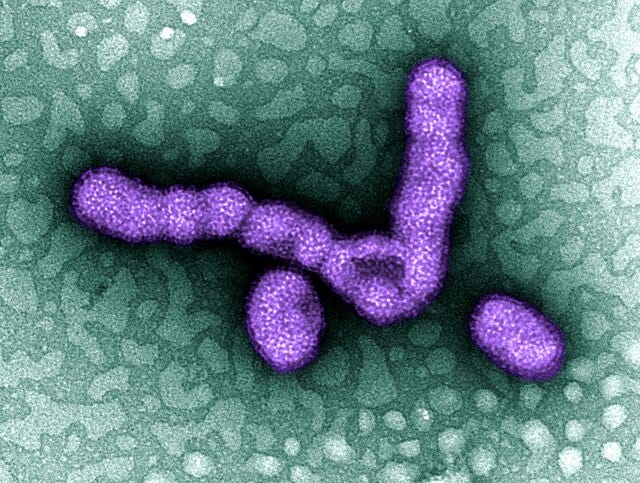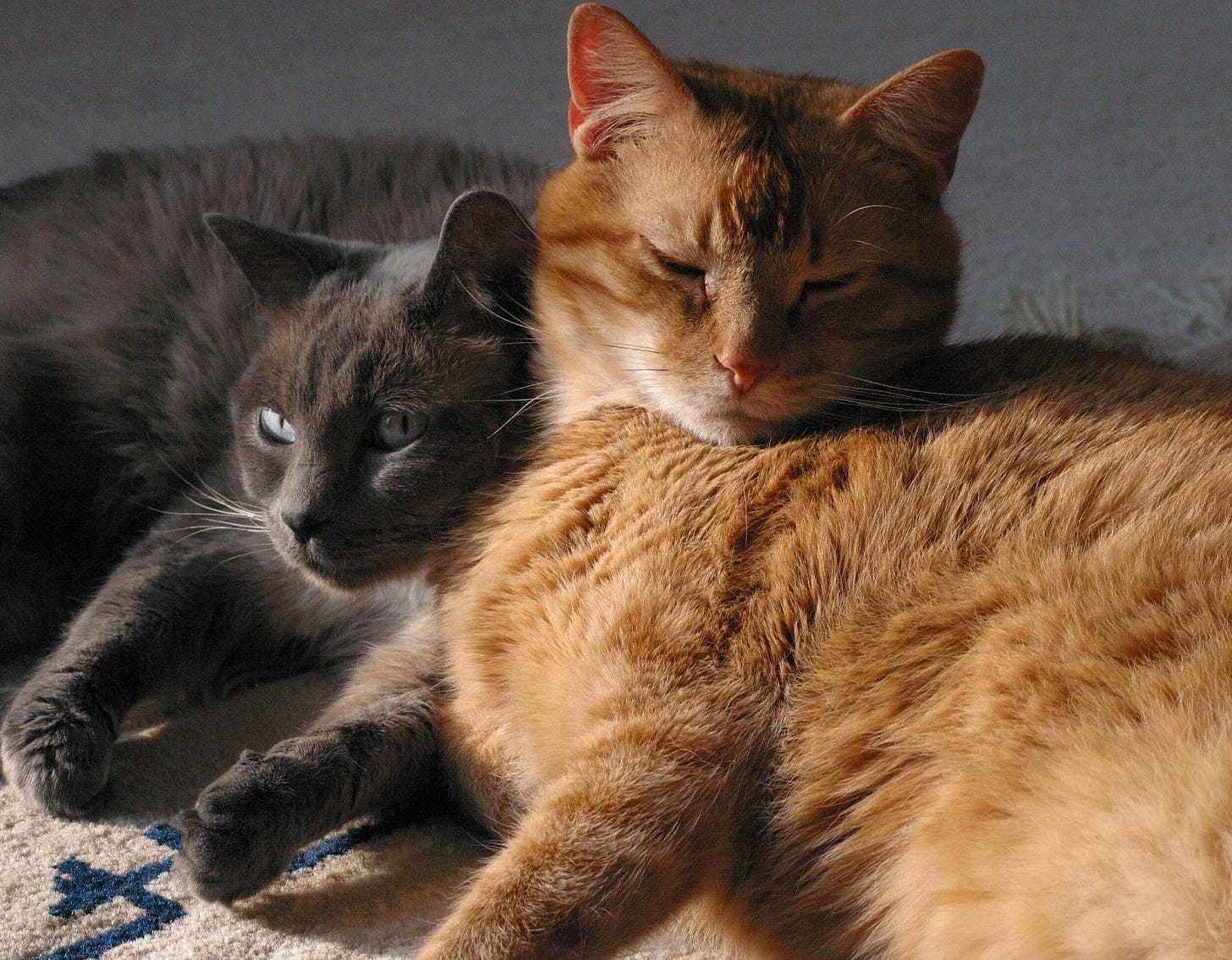Sci-Ed Update 335
Personalized test results, where's the bird flu, heat-related deaths, sleep helps learning language, A&P lingo, melanin discovery, 1 in 5 with incurable STIs, heart's nervous system, more!
Your Heart’s Secret: It Has Its Own Nervous System

New research reveals the heart has its own complex nervous system, or “mini-brain,” capable of regulating the heartbeat independently of the brain. Conducted on zebrafish, the study identified specialized neurons within the heart, including some with pacemaker properties, challenging traditional views of heartbeat control.
This discovery provides new insights into heart diseases and potential treatments for conditions like arrhythmias. Researchers aim to explore how this cardiac nervous system interacts with the brain during stress, exercise, or disease to identify novel therapeutic targets.
Key Facts:
The heart’s nervous system includes specialized neurons with pacemaker functions.
This “mini-brain” regulates heartbeat independently of the central nervous system.
Understanding it could lead to better treatments for heart diseases like arrhythmias.
Read more→ AandP.info/mtk
Study Reveals More Than One in Five Are Infected With an Incurable STI
A new study has confirmed genital herpes is the most common sexually transmitted infection (STI) in the world that does not have a cure and is lifelong.
The burden on global health is immense. According to the most recent data from 2020, nearly 900 million worldwide are currently living with genital herpes.
That's up to about 24 percent of people under the age of 50 who are impacted by the incurable condition.
Roughly 520 million of this cohort have genital herpes from herpes simplex virus type 2 (HSV-2). Around 376 million have contracted it from an HSV-1 infection.
Read more→ AandP.info/o0s
The Secret of Orange Cats Finally Uncovered After 60-Year Search
After 60 years of searching, geneticists have finally identified the gene behind the marmalade coloration in domestic cats.
[Researchers ]discovered cat skin cells from which orange fur sprouts express 13 times as much RNA from a gene called Arhgap36, compared with skin cells from cats with no orange hair.
Expecting to find the protein-coding section of the overproductive Arhgap36 gene had mutated, the researchers were surprised to find it was the sequence preceding it that instead contained a deletion, presumably affecting the rest of the gene's expression.
The 5 kilobase deletion was present in every orange cat the researchers examined out of a database of 188 cats, which included 145 orange, 6 calico/tortoishell, and 37 nonorange cats.
One finding didn't come as a surprise. As long predicted, the mutated gene is located on the cat's X chromosome, explaining why the orange color appears so differently between the sexes. Most orange cats are male, while most female cats with some orange fur end up with patchworks of different colors.
Unlike males that end up with just one copy of this mutation on their solitary X chromosome, females end up with two copies, one on each the X's they receive from each parent.
[Researchers] found greater expression of this gene suppresses color pigment genes, shifting the dark brown to black eumelanin pigments to the reddish to yellow pheomelanin pigments.
Two papers are now online awaiting peer review on bioRxiv here and here.
Kevin Patton comment→ When discussing eumelanins and pheomelanins in humans, I often relate this to melanins in other animals, usually tigers. Here’s another familiar example to use in an A&P class.
Read more→ AandP.info/qfb
Unlocking the science of sleep: how rest enhances language learning
A study led by the University of South Australia (UniSA) and published in the Journal of Neuroscience has revealed that the coordination of two electrical events in the sleeping brain significantly improves our ability to remember new words and complex grammatical rules
In an experiment with 35 native English-speaking adults, researchers tracked the brain activity of participants learning a miniature language called Mini Pinyin that is based on Mandarin but with similar grammatical rules to English.
Half of the participants learned Mini Pinyin in the morning and then returned in the evening to have their memory tested. The other half learned Mini Pinyin in the evening and then slept in the laboratory overnight while their brain activity was recorded. Researchers tested their progress in the morning.
Those who slept performed significantly better compared to those who remained awake.
Lead researcher Dr Zachariah Cross, who did his PhD at UniSA but is now based at Northwestern University in Chicago, says sleep-based improvements were linked to the coupling of slow oscillations and sleep spindles – brainwave patterns that synchronise during NREM sleep.
Kevin Patton comment→ I wonder if learning the new language of A&P before bedtime works the same way.
Read more→ AandP.info/3wu
Learning A&P Terminology: A very brief lesson in the language of A&P
This quick intro to learning the “language of anatomy and physiology” for beginning A&P students is from my Lion Den website. Feel free to link to it from your course website or announcement stream.
Read more→ lionden.com/learning-terminology.htm
Our Secret Language
A segment from Episode 80 of The A&P Professor podcast discusses a playful take on how A&P has its own “secret language.” I’ve found that A&P students seem to have fewer learning obstacles when they understand the playful message and then take the “new language” approach seriously.
Start at timestamp 15:37
To listen to this episode, click on the play button above ⏵ (if present) or this link→ theAPprofessor.org/podcast-episode-80.html (and slide to time 15:37)
One Age Group Stands Out For Heat-Related Deaths, And It's Not What We Expected
Humans are expected to die in record numbers as extreme heatwaves bake the world, and it is not just the very young and very old we need to worry about.
A new study in Mexico has found that since 1998, most heat-related deaths have occurred in those aged 18 to 34 – the group that one might expect to be most physically capable of withstanding extreme humidity and heat.
This climate-driven inequality disagrees with the previous literature, which suggests that elderly people are more likely to die from cold and hot weather.
But even though physiologically speaking, older people are more at risk from heatwaves, the new findings suggest younger people are ultimately more exposed.
Read more→ AandP.info/9z2
Why hasn’t the bird flu pandemic started?

If the world finds itself amid a flu pandemic in a few months, it won’t be a big surprise. Birds have been spreading a new clade of the H5N1 avian influenza virus, 2.3.4.4b, around the world since 2021. That virus spilled over to cattle in Texas about a year ago and spread to hundreds of farms across the United States since. There have been dozens of human infections in North America. And in some of those cases the virus has shown exactly the kinds of mutations known to make it better suited to infect human cells and replicate in them.
No clear human-to-human transmission of H5N1 has been documented yet, but “this feels the closest to an H5 pandemic that I’ve seen,” says Louise Moncla, a virologist at the University of Pennsylvania. “If H5 is ever going to be a pandemic, it’s going to be now,” adds Seema Lakdawala, a flu researcher at Emory University.
Others are more sanguine, noting that similarly menacing avian flu viruses, such as one called H7N9, have petered out in the past. “Why didn’t H7N9 end up being easily human-to-human transmissible and cause a pandemic?” asks Caitlin Rivers, an epidemiologist at the Johns Hopkins Center for Health Security. “I feel like there’s really no way to estimate and it could go either way.”
Read more→ AandP.info/xk8
Study Finds Humans Age Faster at 2 Sharp Peaks – Here's When They Hit
The progress of a human being through life might be thought of as a mostly gradual succession of changes from the ovum to the grave.
But if you wake up one morning, look in the mirror, and wonder when you suddenly grew so much older, you may not be imagining things.
According to research into the molecular changes associated with aging, humans experience two drastic lurches forward, one at the average age of 44 and the other at the average age of 60.
"We're not just changing gradually over time; there are some really dramatic changes," geneticist Michael Snyder of Stanford University said in August when the study was published.
"It turns out the mid-40s is a time of dramatic change, as is the early 60s. And that's true no matter what class of molecules you look at."
Aging is complex, and associated with growing risks of diseases of all kinds.
Kevin Patton comment→ I thought it was just me!
Read more→ AandP.info/y6b
Personalized ranges for blood-test results enable precision diagnostics
Blood tests are fundamental to modern medicine, and are typically interpreted against broad reference ranges, based on population averages. Yet this standard approach overlooks a crucial point — many blood measurements (biomarkers) are highly individualized and regulated around unique stable values called setpoints, which differ between people. For many people, their ‘normal’ blood values fall within a narrow range — one that is much smaller than the population-based reference range1.
Writing in Nature, Foy et al.2 present evidence that underscores the importance of these personalized setpoints, analysing decades of blood-test data across nine key parameters. The authors’ findings suggest that integrating personalized reference intervals into clinical diagnostics could bring about a new level of precision medicine.
Kevin Patton comment→ Such individual variations and “personal set points” are often emphasized in The A&P Professor podcast and in my textbooks. For example, the segment of Episode 101 that starts at time 10:01, discusses what is “normal” body temperature. (Clue: it’s personal)
Read more→ AandP.info/8sr









